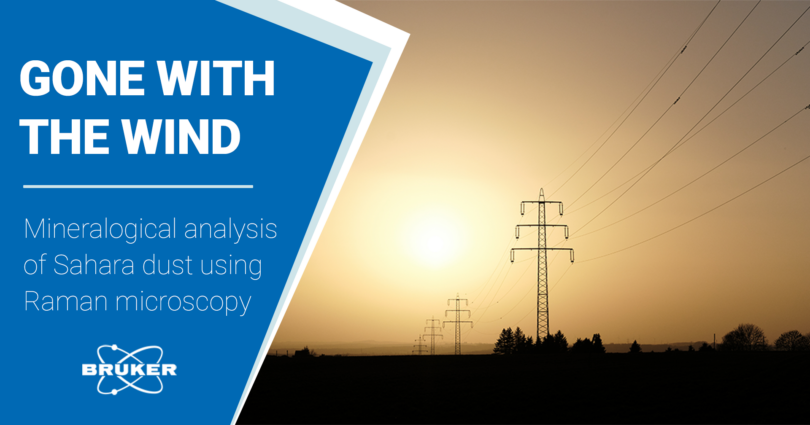Last week, many cars looked like this:
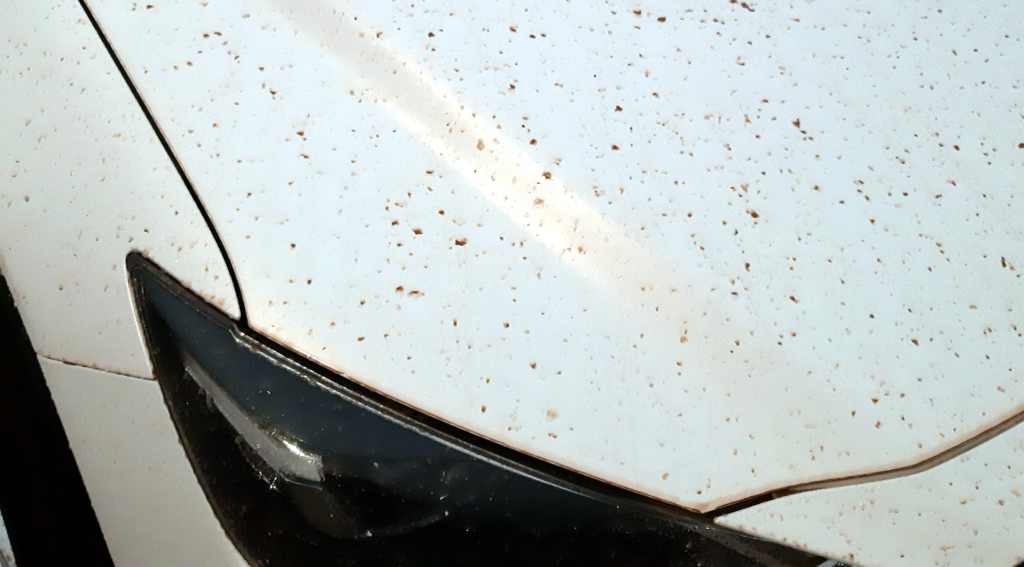
Sahara dust mostly consists of clay minerals such as kaolinite and illite, quartz, calcite as well as iron oxides, traces of titanium oxide, and organic material (Rodriguez-Navarro et al. 2018). Fun fact: if you know the dust’s exact chemical composition, it can reveal the region of the Sahara from which the dust originated.
Since Raman (micro) spectroscopy is perfect for identifying inorganic materials such as minerals, we asked ourselves: “Is Raman suitable to analyze Sahara dust?”
Armed with spatula and petri dish, we set out to scrape some dust off cars in the Bruker parking lot in Ettlingen and analyzed the material with our SENTERRA II Raman microscope using a 532 nm laser and 50x magnification.
Raman analysis of Sahara dust
Initially the sample met us with a lot of fluorescence but we gladly accepted this challenge and put SENTERRA II’s patented rubber band correction to the test. With success !
The Spectra became easy to evaluate (Fig. 2) and where there was only fluorescence, clear peaks could now be seen. We were able to detect quartz, anatase, calcite and organic carbon in the sample. However, the most notorious component of Sahara dust remained undetected.
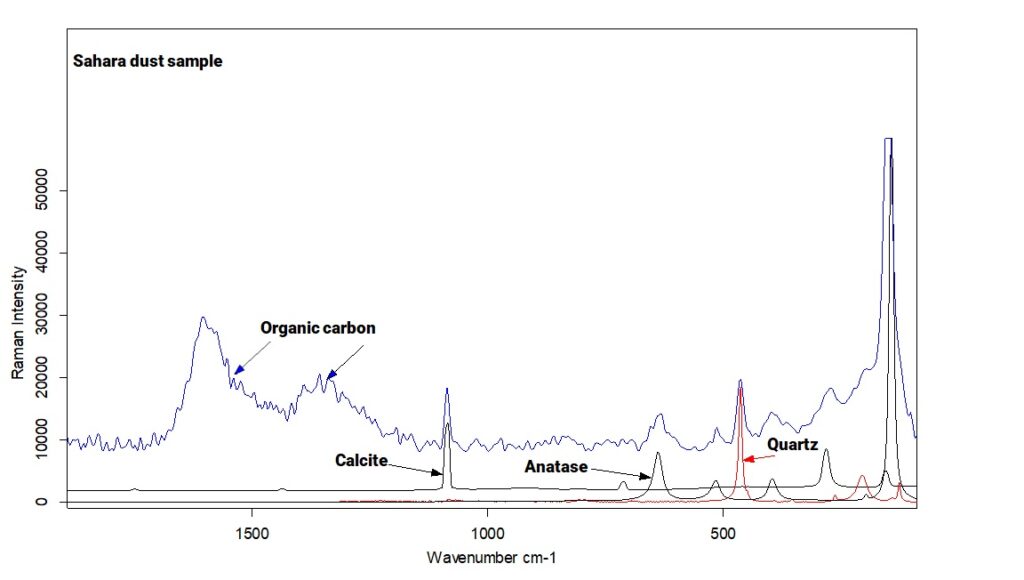
Where is the iron?
Presumably, the concentration of the iron at the initial measuring spot was not high enough. But we also found dark red mineral grains (Fig. 3) in the sample and lo and behold, that’s where we found it.
With a lot of experience and finesse, we were able to tune our SENTERRA II microscope to deliver us nice spectral data.
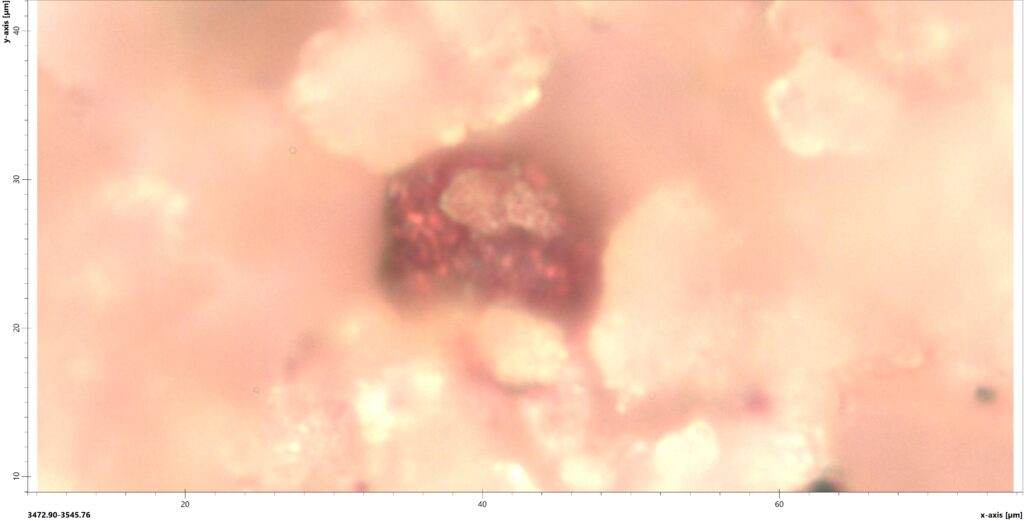
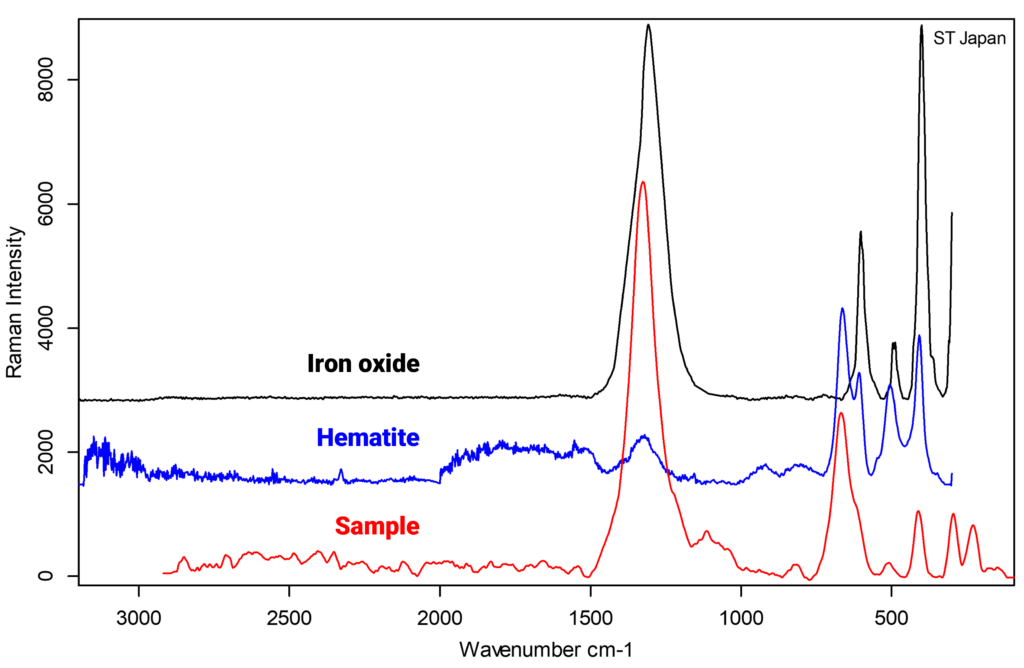
Although we could not conclusively determine which iron oxide was present, the Raman reference library search (Fig. 4) clearly proofed its presence.
Is Raman a suitable method?
In the end, the SENTERRA II detected five out of the six main components of Sahara dust.
- Quartz
- Calcite
- Titanium oxide
- Organic Carbon
- Iron oxide
- Clay Minerals (not found)
Including parking lot sampling, measurement and identification, this result took us only 30 minutes. Achieving this yield in such a short time is phenomenal – especially when considering that XRD analysis is the method of choice in Sahara dust research.
Our quick and dirty approach shows once again how flexible Raman is: Just go out to the car, scrape something off and gain a lot of microscopic chemical information very quickly.
By the way, Raman and FT-IR are complementary techniques that help each other out in many situations. If you want to understand the difference, take a look here.
References
Rodriguez-Navarro, C., di Lorenzo, F., Elert, K. 2018. Mineralogy and physicochemical features of Saharan dust wet deposited in the Iberian Peninsula during an extreme red rain event. Atmos. Chem. Phys., 18, 10089–10122


